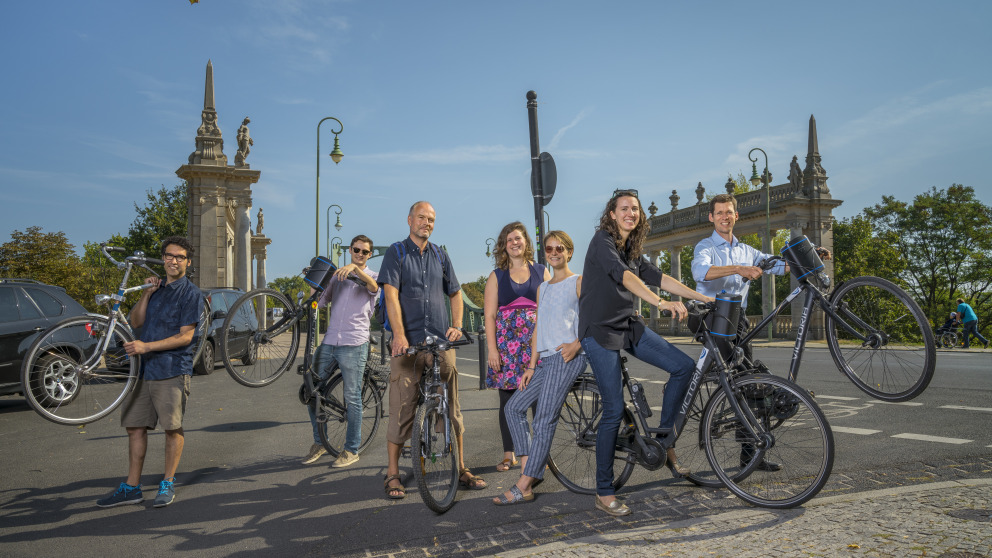"Bad Atmosphere" on City Cycle Lanes
04.07.2019
The cause of millions of premature deaths annually, air pollution is a global challenge. It affects both developing and developed countries, with cities, in particular, struggling to meet air quality standards. A new study by a team of researchers at the Institute for Advanced Sustainability Studies (IASS) investigates air pollutant concentrations in urban areas and the factors that affect air quality. The study includes a number of recommendations that will interest urban planners and citizens alike.

Measurements of particle number concentrations were taken for the study using bicycle-mounted instruments. Led by IASS researcher Erika von Schneidemesser, the team measured the concentrations on frequently used bicycle paths in Berlin and Potsdam.
Using innovative technologies, the researchers were able to measure the concentration of harmful particles in real time, both on-road and at stationary sites over the three months of summer. The researchers also developed a method to account for fluctuations in the average ambient concentrations per journey and to compare results across all of the routes sampled.
Buses, trucks and motorcycles are key contributors
The study reveals major differences in air pollution levels depending on the type of road, local environmental factors, and vehicle types. For example, when buses, motorcycles, or trucks join passenger vehicles on the road, particulate concentrations increase by 30% to 40% relative to the average ambient level.
High-traffic situations, such as traffic jams, cause particulate concentrations to rise by 47%; while cars waiting at traffic lights trigger a 35% increase. Cycling in residential neighbourhoods decreased particulate number concentrations by 17% relative to the ambient average level, and by 22% when cycling through green spaces or parks.
Valid data to support transportation planning
“These results seem logical at first glance. What this study does, however, is to provide the quantitative evidence needed to validate such common assumptions,” says Erika von Schneidemesser of the IASS. “The results suggest that in future urban planners should route cycle paths along side roads running parallel to main roads. This would ensure that routes remain attractive, while reducing particulate matter exposure. Until then, cyclists would be better off taking cycle paths through parks and residential areas. But don't take these results the wrong way: Cycling – even on main roads – is still much healthier than driving by car!”
Publication:
Erika von Schneidemesser, Kristina Steinmar, Elizabeth C. Weatherhead, Boris Bonn, Holger Gerwig, Jörn Quedenau: Air pollution at human scales in an urban environment: Impact of local environment and vehicles on particle number concentrations, Science of the Total Environment Vol. 688. DOI: https://doi.org/10.1016/j.scitotenv.2019.06.309
Contact


